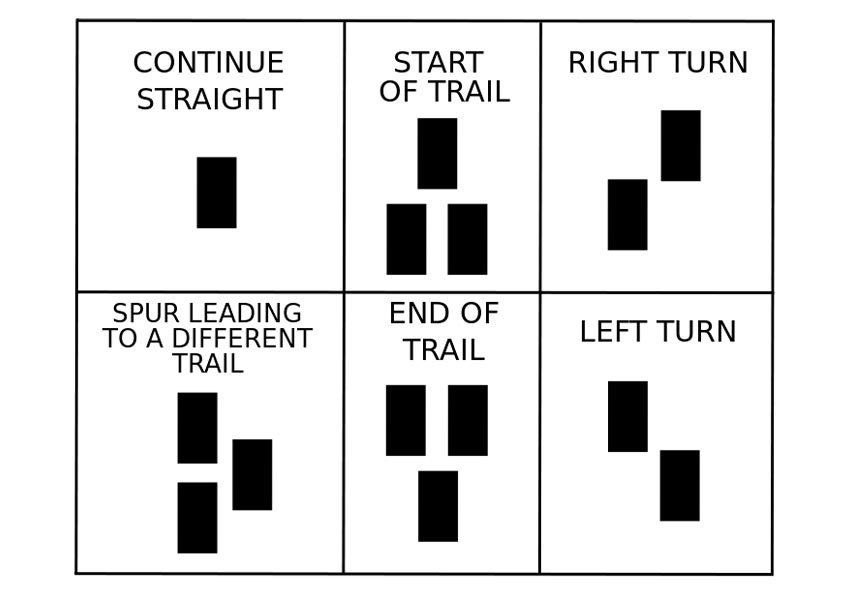By Nick Del Giudice, American Forests
Ever since humans first ventured into the wilderness, there has been a need for and use of trail markers. Whether it is Hansel and Gretel leaving a trail of breadcrumbs, or a GPS device tracking an entire journey, there are dozens of ways to keep on the traveled trail, but none as common as the trail blaze.

Generally, yellow blazes are used to indicate the presence of a road or paved path with hitchhiking opportunities. Many dedicated thru-hikers will disparage “yellow blazers,” but hike your hike! Yellow blazes can also sometimes be the primary color of a blaze for a trail system or blazes in an urban area of a trail.
In line with the traditional outdoorsman’s ethos, “leave no trace,” blazes are impermanent. A blaze is either a swatch of paint, posted sign, or section of removed bark, so it will disappear unless it is renewed. This generally means carefully putting on a new coat of paint or re-cutting the blaze approximately every four years (more frequently if the blaze is placed on Aspen or Birch).
When making blazes, it is important to get the spacing right. Too often immersion into the wilderness can be ruined with poorly spaced blazes, detracting from the hike. However, if blazes are too far apart it is possible to get lost or lose confidence in your direction. Remember to make sure your blazes are authorized. Many trails cross over private property and owners may not want blazes on their land. Most trails are on public lands, but without proper permission blazes should not be created. Additionally, trails can cross through towns or developed areas and people may not want painted blazes on their trees or telephone poles. Oftentimes, the National Park Service will provide blaze signs with steel mounts to place. Chalk is a good material to create temporary blazes with if you are going off the beaten path and don’t want to get lost.
In National Parks, the blazes tend to be created by park rangers and are maintained with great frequency. However, along many of our nation’s scenic trails the blazes are maintained by official volunteers using Park Service materials. For more information about blazes and volunteer opportunities to do some blazing of your own, contact your nearest National Park or scenic trail hiking association.